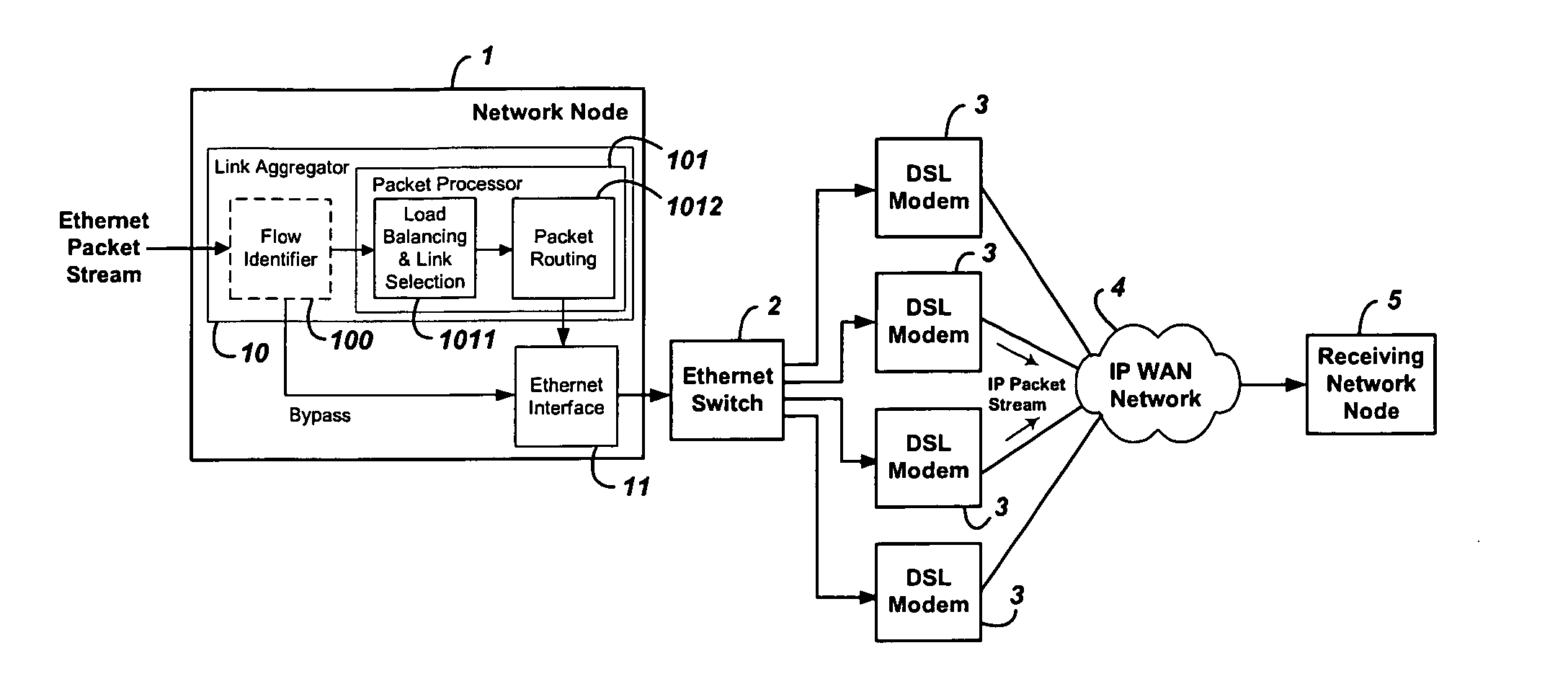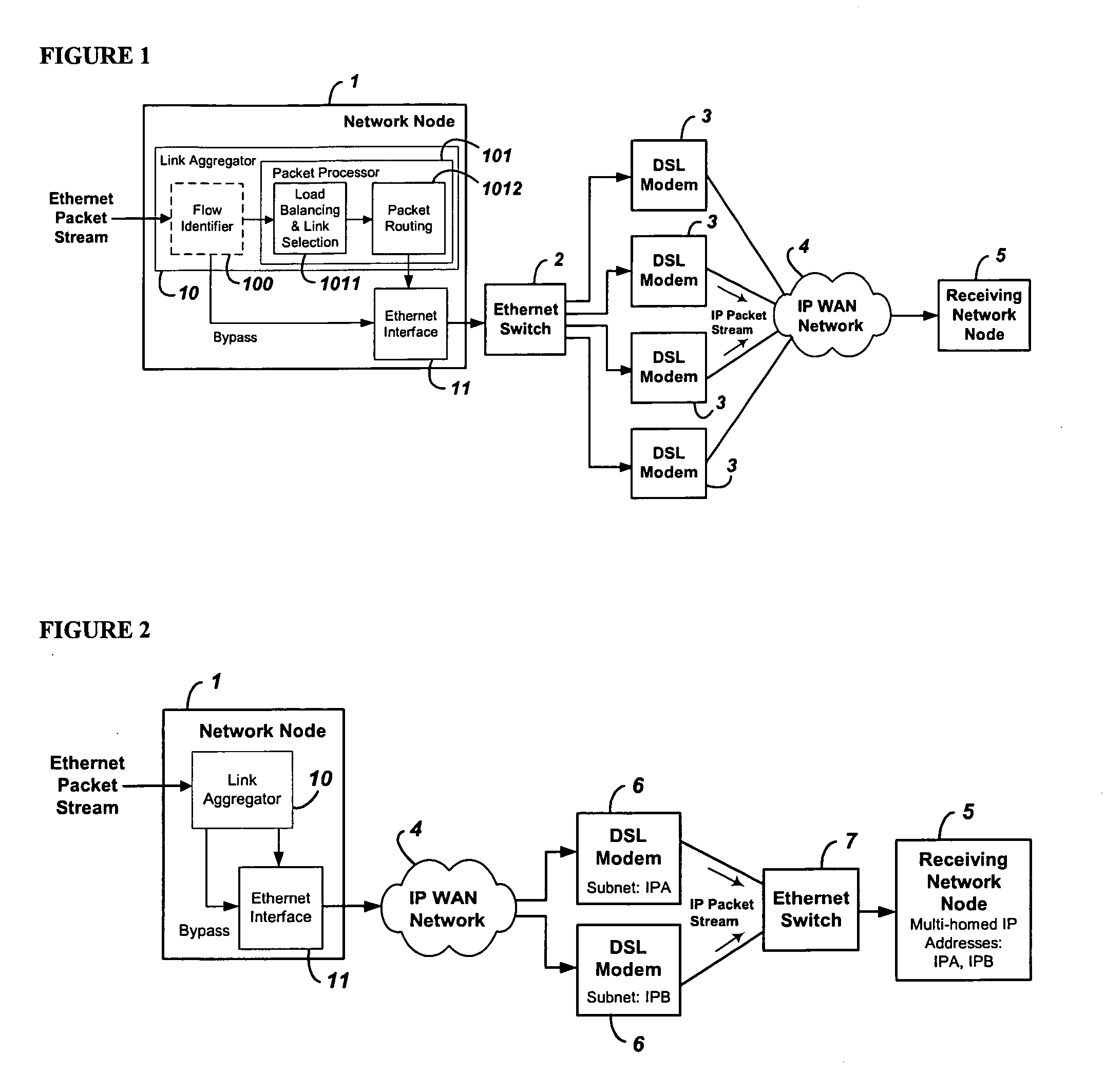System and method for the virtual aggregation of network links
a network link and virtual aggregation technology, applied in the field of computer networks, can solve the problems of not offering trunking service for dsl lines or cellular data connections, aggravated throughput problems, and the potential for a single point of failure of the connection handling all network traffic, so as to increase throughput and reliability
- Summary
- Abstract
- Description
- Claims
- Application Information
AI Technical Summary
Benefits of technology
Problems solved by technology
Method used
Image
Examples
Embodiment Construction
[0027] Embodiments of the invention implement a method for virtual link aggregation that provides high-throughput and reliable transport of data packets, including but not limited to, video streams and other time and order sensitive packet flows. The ability to aggregate multiple low speed and low reliability links becomes especially important in the transport of video, audio, and other time and order-sensitive packet streams that require high throughput. Video streams, in particular, often require more throughput than a single low-cost broadband link, such as DSL and cable-modem, can provide. Any mechanism that can couple multiple low-cost links has the potential to provide significant cost advantages in the provisioning of streaming video services.
[0028] Because embodiments of this invention rewrite packet destination addresses, they control the routing of each packet on a per-packet basis rather than by directly controlling network ports or link interfaces. By this indirect cont...
PUM
 Login to View More
Login to View More Abstract
Description
Claims
Application Information
 Login to View More
Login to View More - R&D
- Intellectual Property
- Life Sciences
- Materials
- Tech Scout
- Unparalleled Data Quality
- Higher Quality Content
- 60% Fewer Hallucinations
Browse by: Latest US Patents, China's latest patents, Technical Efficacy Thesaurus, Application Domain, Technology Topic, Popular Technical Reports.
© 2025 PatSnap. All rights reserved.Legal|Privacy policy|Modern Slavery Act Transparency Statement|Sitemap|About US| Contact US: help@patsnap.com



